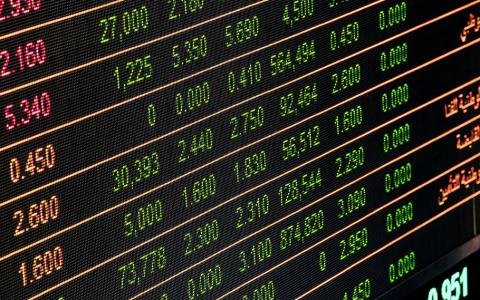
(24/7 Wall Street) If anyone equity strategist across Wall Street has been right on the money over the past few years, it is Stifel’s Barry Bannister. We have covered his outstanding and prescient calls for years, and, generally, when he talks, we listen. Those who did at the height of the sell-off in 2020 posted some massive gains.
On March 19, 2020, just four short days before the final surge of selling and investor capitulation on March 23, Bannister and his equity strategy team dropped a prediction for a relief rally that would carry the S&P 500 to the 2,750 level by April 30. On March 23, the index hit an intraday low of 2,191 and closed at 2,237.
We covered that incredibly bold prediction then, and while some were very skeptical of the call, Bannister made the prerequisite financial media rounds at the time giving his firm’s rationale for the prediction. In early April of 2020, as a surge of alarming news on the COVID-19 pandemic flooded the airwaves, Stifel came out and defended the call, telling clients to stand their ground. In the middle of April, as the rest of Wall Street was finally on board, the firm raised the end-of-April target to 2,950. On April 30, in line with the laser-like call from Stifel, the S&P 500 closed at 2,912, after hitting an intraday high of 2,930 and after trading to 2,950 level the day before. In late May of 2020, Stifel once again raised the price target on the S&P 500 to 3,250 by August 30.
While much of Bannister’s remarkable call has been lost in the sturm and drang of the past year, which included a very contentious election, a massive widening of the income gulf between Americans, a tsunami of constantly negative COVID-19 news, a shuttered economy and a summer of protests, the S&P 500 now sits almost 800 points higher than in late August of 2020, in one of the most incredible bull market runs in the history of Wall Street.
Once again, Bannister sees storm clouds on the horizon, and with good reason. Everything from stocks to gold to Treasury debt to oil and has been pushed higher. The meme stock traders from the Reddit/WallStreetBets crowd have juiced the market volume higher, while hammering hedge funds with crowded short positions and basically become part of a new lexicon in the trading world. In addition, toss in the alarming fact that the S&P 500 hasn’t had a 5% correction based on closing prices since October, and the put/call open interest ratio on S&P 500 has surged to its highest level in over five years
A new report from Bannister and his team makes the case that a significant decline actually could be healthy for the market, especially if earnings continue to hold up. The report noted this:
We see the “Cyclical vs. Defensive” and “Value vs. Growth” trades correcting further in the second half of 2021, along with the S&P 500 to 3,800 (-11%). We provide details of S&P sub-industry winners and losers. Principal variables in our forecast are a fading U.S. purchasing managers index manufacturing (March-2021 high 64.7, our target 55.8) and a stronger dollar (JPM Broad 119 now, our target 125, or DXY~95). The primary causes are slowing global money supply in U.S. dollar terms, quantitative easing distortions and the lagged effect of China’s policy tightening. To underscore the shift, we see liquidity-driven Bitcoin falling to $12,000, copper to $3.00 per pound. and Brent oil to $55 a barrel (now $75 a barrel.), all in the second half of 2021.
Those who don’t heed Bannister’s call may do so at their own risk. Again, at 24/7 Wall St. we have covered Bannister and his team for years, and one thing is for sure. While his Elaine Garzarelli moment never was appreciated fully, the years of quality work and spot-on calls speak for themselves. Plus, it just makes sense for investors to take some profits now and start building some cash reserves. In addition, it is important to note that capital gains tax increases are a given, and they are expected to be among the highest in the world. That in of itself is a reason to move to a more defensive posture.



